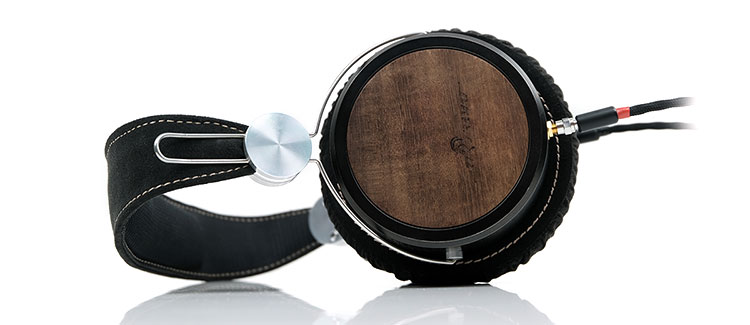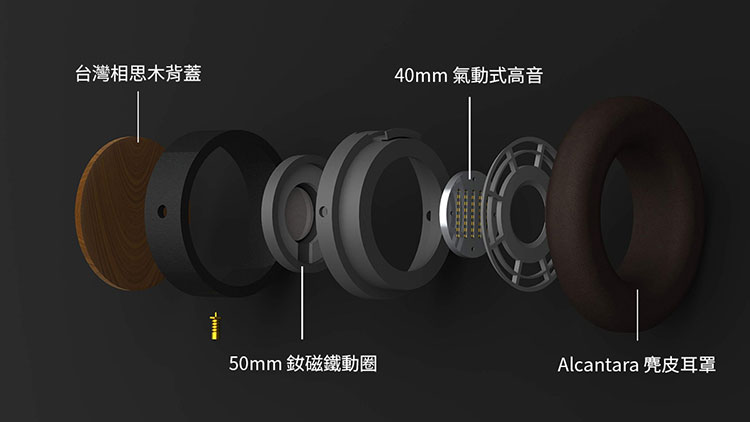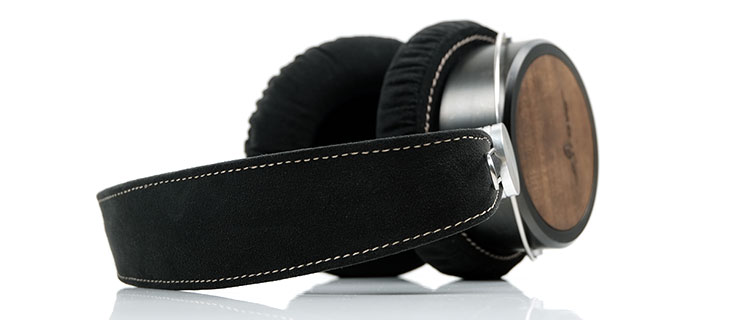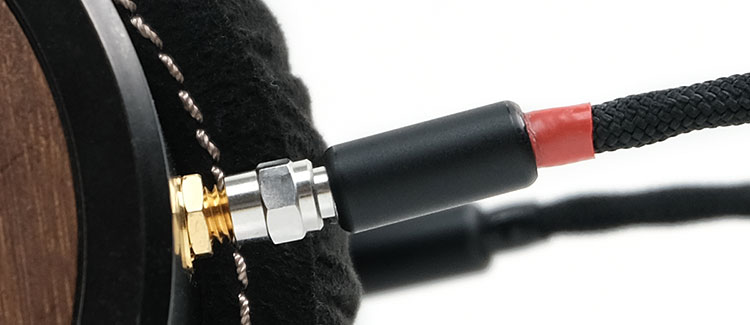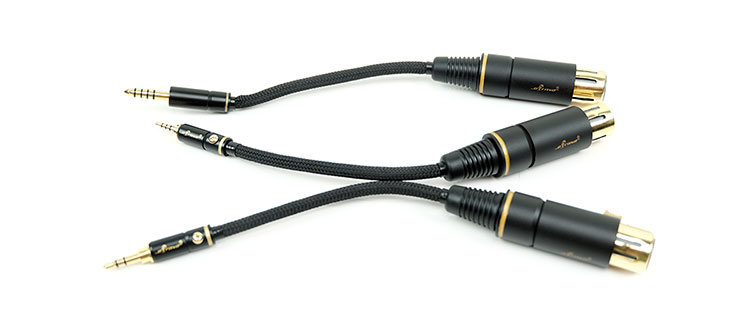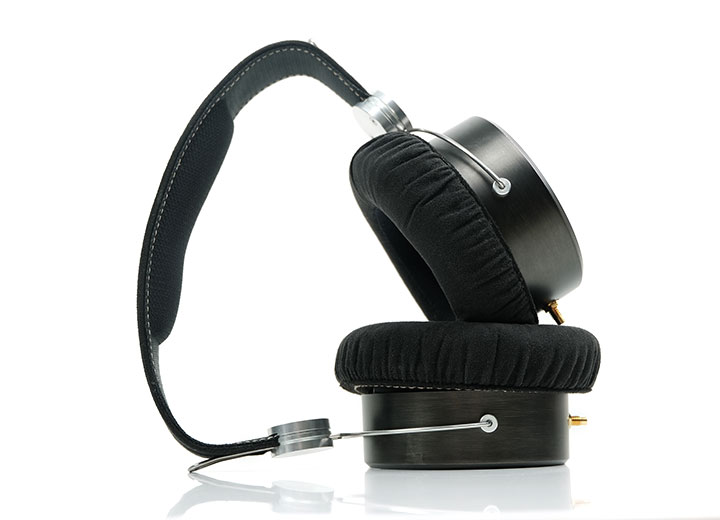The oBravo HAMT-3 MKII is the company’s next-gen hybrid dynamic driver and AMT tweeter closed-back full-size headphones. It is priced at around £795.
Disclaimer: The oBravo HAMT-3 MKII sent to us is a sample in exchange for our honest opinion. We thank the team at oBravo and Audio Concierge for giving us this opportunity.
To read more about oBravo products we reviewed on Headfonics click here.
So, after going over Obravo’s most expensive headphones, time to switch our attention to the cheapest in their range, the HAMT-3 MKII which is priced close to the likes of the LCD-2 Classic, Kennerton Vali and Hifiman’s Ananda. I am tempted to say mid-fi but the pricing is just above that at £795.
Now, this particular unit has been with me for a few months as an engineering sample but it is only recently we managed to complete the experience when the final filter and plugs arrived. These are similar to what you get inside the HAMT-1 Signature edition and are designed to do roughly the same thing, tweak the sound by block or opening up the airflow.
Tech Inside
The HAMT-3 MKII is a closed-back headphone with a similar form factor to the HAMT-1 Signature edition and on paper a similar hybrid fusion of a 50mm neodymium dynamic driver and a 40mm AMT tweeter in a coaxial configuration. As with the HAMT-1 Signature, I am presuming a single crossover with the tweeter kicking in around 7k onwards and I will confirm that in the main review if possible.
Like the HAMT-1 Signature edition, the AMT driver in the HAMT-3 MKII is the MK1 version which is the same version as their EAMT series drivers only on a much larger scale. The HAMT-1 Signature also uses a neodymium dynamic driver (NDD) but this time it is a smaller version of the one inside the Signature Edition at 50mm compared to 57mm.
The capacitor inside the HAMT-3 MKII is also a much cheaper non-Mundorf white EVO Mcap. The Mundorf caps can cost 3 figures and upwards for the white EVO versions alone.
AMT
The AMT driver inside the HAMT-3 MK II is an Air Motion Transformer design and covers mainly the high frequencies of the overall presentation. You can contend that it is a form of electroacoustics but unlike traditional ribbon designs.
In contrast to a traditional ribbon, the diaphragm of an AMT is of a pleated shape similar to a bellows design, (think of an airbag). Unlike conventional diaphragms, AMT diaphragms are made of mylar ribbon, bonded with conductive aluminum strips.
Moving Air Faster
They are designed in such a way to have a much lower mass than conventional diaphragm with a much smaller surface area, by up to 80% on traditional speaker designs. This mylar ribbon diaphragm is then suspended within a dipole magnetic field creating a very tight and tense pressure environment.
That basically means when a signal is passed through the folded pleats of the mylar ribbon design it moves air a heck of a lot faster than conventional designs, up to 5 times faster. As such AMT is perfect for exacting or demanding treble performance where conventional designs might struggle to keep up with complex high-frequency reproduction.
Unboxing & Accessories
The packaging is fairly similar on the outside to the Signature in terms of branding and color but the shape is very different. It looks like a large Toblerone shape to me, to be honest. The reason is primarily to neatly fit the new slimmed-down carry case inside without wasted space.
Instead of the aluminum suitcase-style, you get a triangular semi-stiffened and zipped nylon hard case. It is less durable looking and certainly cheaper but it is smaller, well made and with plenty of pockets for storing an excellent cable and adaptor accessory system.
The headphones sit neatly in the center with enough space for the lid to easily clear them and zip-tight without any bulges. The protection looks good with plenty of straps for the cables to stay neatly in place during transportation.
Aside from that you also get the filter and tuning plugs in a small plastic bag with a fitting guide as well as the little keys to allow you to do a partial disassembly of the cups in order to fit them.
Design
The visual aesthetic is fairly similar to the HAMT-1 Signature but on closer inspection, the HAMT-3 MKII follows a slightly more traditional shape than the flagship version as well as using some slightly cheaper materials. However, not all the materials are cheaper and those lovely Alcantara pads are the same ones as its more expensive sibling.
There is still a mix of dark grain Acacia wood for the plates, aluminum in the cups, baffles, and gimbals but the lavishness of the finishing and amount of material used has been pared down somewhat.
Instead of a thick carved wooden plate from the Signature, this is more of a flat circulate plate which is probably easier to cut and cure. The gimbal is now more of a thin aluminum rod compared to the thicker screw-locked aluminum curved bar from the Signature.
The design does not swivel from side to side either but to its credit, the HAMT-3 MKII cups are articulate enough on the vertical axis and can switch to a flat position. The thinner gimbal rod does have a little bit of flex also to allow for shaping. It is not as stiff as the Ananda design for sure.
Headband
The big change in the headband is the switch from the more expensive angular carbon fiber build with memory foam and Alcantara finishing to a simpler velvet and nylon wrapped foam design. I can feel the presence of the headphone a lot more than the very comfy band of the Signature Edition.
Cable & Connectors
Surprisingly, and in a good way, the HAMT-3 MKII comes with the same cable and additional connectors as its more expensive HAMT-1 Signature edition. I am quite happy about that because this is an incredibly useful system to have and the cable itself is a pretty high-quality SPC, (gauge unknown at present but presuming 22/24AWG at its lightest).
Connectors
The HAMT-3 MKII uses the same good quality Taiwanese coaxial connectors as the HAMT-1 Signature Edition and are a world away from the frustrating cheaper Hifiman recessed coaxial connectors. It is unlikely you will break any internal wiring trying to work the independent screw system to lock the cables onto these connectors. They are slightly protruding also which allows a better grip than having them recessed.
You will not in the picture the stock connection barrels on the cable are a bit basic looking. This is an engineering sample cable and not the finished version. The finished cable versions are much cleaner, better build quality and have the oBravo branding on them.
Stock Cable
The stock cable is the same as the Signature model so that means a relatively 1.2m cut. However, it is a lovely finish with low microphonics and no memory retention. It is not the lightest of cables but of acceptable drag for a desktop solution.
The majority of the weight is in those black coated and oBravo branded XLR 4-pin plugs with indestructible strain relief and the more svelte black splitter and connector barrels. All seem barrels seem to be made of good-quality aluminum with an anodized black coating.
Adapters
How awesome are these adapters? I have been using them non-stop and not just with the HAMT-3 MK11. Virtually every aftermarket 4-pin XLR cable cannot be fitted to match any output jack I have. Yes, I accept I am mixing geometry and wire quality by mixing and matching but the usefulness is too good to ignore.
Inside the carry case you get a few little pockets to allow you to store a full set of supplied pigtail 3.5mm, 2.5mm TRRS, and 4.4mm connectors. These are all finished with the same wire and paint as the main cable. That pretty much covers everything out there and importantly, allows a degree of transportability to the HAMT-3 MKII.
Comfort & Fitting
Now the HAMT-3 MKII weighs a good bit less than the Signature version at 398g compared to 540g. And you can feel the reduced weight right away when you compare them side by side in your hands and on your head.
Having said that I actually find the dissipation of pressure to be slightly better on the Signature. This is due to the mechanics of the carbon fiber headband shape and Alcantara-wrapped foam. The side pressure is better on the HAMT-3 MKII but the vertical pressure is a bit more focused due to the smaller foam structure underneath. It brings it more to a point than the more expensive build on the Signature.
Despite its closed nature isolation is not that great. The Alcantara pads are fairly porous, to begin with so you won’t find too much background noise is blocked out.
Initial Sound Impressions
(Tested with a Lotoo PAW Gold Touch and a Hifiman R2R2000 Red Edition for portable. For the desktop we used an Auris Audio HA-2SE with a Chord Qutest DAC and a Hugo M Scaler).
These initial impressions are with the stock filter and plug setup. Subsequent filter and plug combinations will be tested in the main review to come soon after.
My initial impression of the HAMT-3 MKII stock tuning is one far more colored than the Signature. That means a fairly energetic and forward low-end with plenty of sub-bass rumble and mid-bass warmth.
It also means a fairly strong lower-mids suck out and a neutral to slightly dipped vocal and instrumental presence. You get plenty of bass fundamental and it has a nice PRaT to it for EDM but lacks a bit of texture and separation in those lower mids for complex instrumental work.
It is not the widest of soundstages in its stock form so hoping the tuning plugs can clean that up and balance out that punchy dominant low-end with a bit more mids performance. Female vocals have more presence suggesting a mids to upper mids rise from 1/2k to around 3/4k.
Source Dependency
There is some source dependency in the mids to treble performance for me though, at least in this initial testing phase. I found the treble somewhat muted with the Auris Audio HA-2SE, even with the Qutest and M Scaler behind it. However, the performance was much cleaner with a better treble performance with the Hifiman R2R2000 Red Edition.
With the R2R2000 you do get a nice natural but articulate treble with some excellent percussion timbre though I am not convinced the extension is quite as good as the Signature flagship. That being said it is the kind of treble I really like. That means it is not shelved down or dark but neither harsh nor brittle sounding.
Stay Tuned!
I think, as with the Signature version, the tuning plugs and filters will tighten up some issues I have with the stock format tuning. The aggressive low-end tends to dominate. Whilst there are some really excellent treble overtones adding to HF timbre the booming bass adds to a slight sense of imbalance. I think it is important to get the plugs into action here to tone it down and get something a bit more linear.
Outside of that, the HAMT-3 MKII build quality is very nice. I love those Alcantara pads and the cable/connector system is a must for any headphone system these days given the wide range of sockets in DAPs and desktop amps.
And DAPs do seem to be a factor given their 32Ω and 105dB SPL rating. Out of the setups I tried, the Hifiman R2R2000 Red Edition was by far my favorite. Pocket rockets may well be a quality match with the HAMT-3 MKII. Stay Tuned!
oBravo HAMT-3 MKII Specifications
| Brand | oBravo |
|---|---|
| Country | Taiwan |
| Color | Brown |
| Technology | AMT Tweeter |
| AMT Tweeter Size | 40mm |
| Frequency Range | 20Hz~45kHz |
| Enclosure Material | Aluminum |
| Color | Gunmetal |
| Driver Configuration | 1 AMT 1 Neodymium Dynamic |
| Driver Count | 2 |
| Dynamic Driver Size | 50mm |
| Impedance | 32 Ohm |
| Sensitivity | 105dB |
| Product Weight | 398g |

